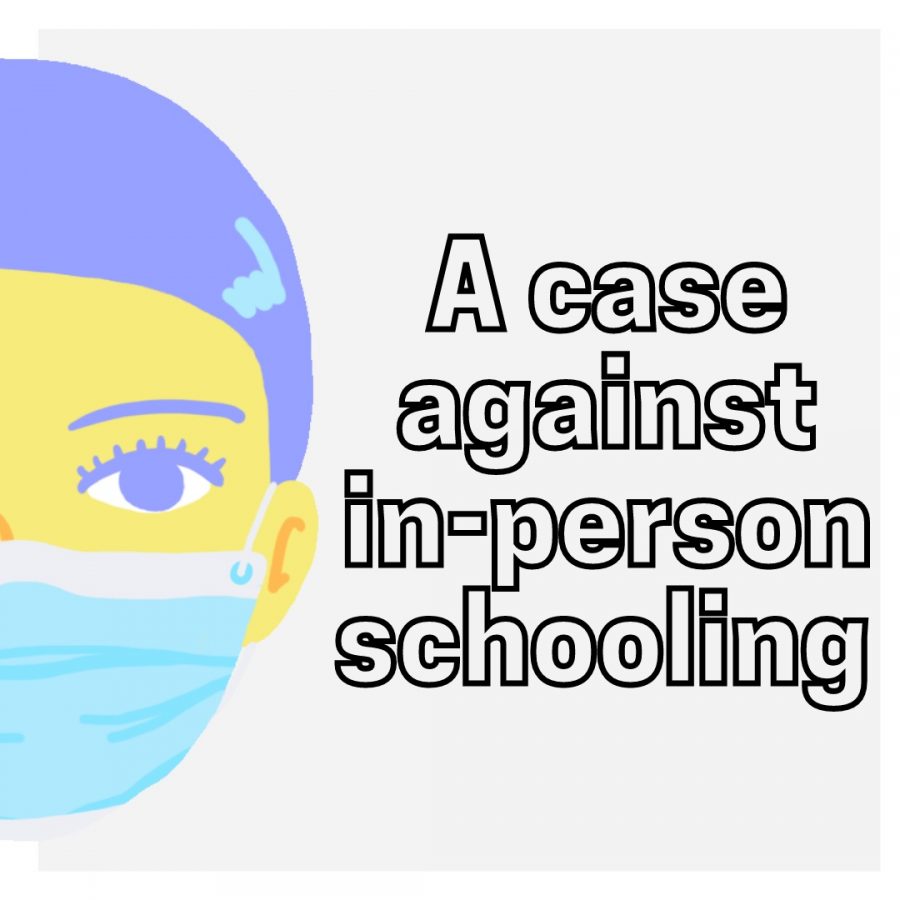Numbers and science don’t lie: A case against in-person schooling
These past few months have been a whirlwind of confusion and uncertainty for students, parents and teachers. While living in a state of unending quarantine has been challenging for a lot of students, going back to school is going to create a lot more problems than the boredom of constant home life during online school.
Nearly all schools across Florida have been partially reopened in-person since the beginning of the school year, only recently including Miami-Dade County Public Schools, which reopened on Oct. 5.
The state-mandated reopening of schools brings with it an even bigger outbreak of Covid-19. While it’s true that most teenagers have a lower risk of illness and death than their elders, the people around them are still vulnerable. Students live with their parents, grandparents and guardians — some of whom are at a high-risk of sickness and death from Covid-19. The same vulnerability applies to high-risk teachers. According to the Washington Post, during the month of August, teachers returned to schools in a densely populated district of Georgia and spread the virus amongst themselves before students could even attend. About 260 employees were sent home to quarantine a day after returning.
As Miami Herald reported in late August, 900 students, ranging from K-12 to colleges, were infected over a two-week period as some schools reopened throughout Florida, and data by the Florida Department of Health showed on Sept. 29 that this number had jumped to 4,689. Republican Gov. Ron DeSantis consistently pushed for schools to continue in-person education, eventually forcing almost all districts in the state to begin the new school year in-person.
DeSantis went even further, threatening to cut funding for schools that didn’t comply and ordering officials not to release Covid-19 numbers for some school districts. His stance on in-person schooling is almost as aggressive as President Donald Trump, who has been a big advocate for disregarding health and reopening schools. DeSantis has been relentlessly pushing Trump’s reckless agenda of continuing in-person teaching, going against the warnings of health experts and teachers across the country.
As official numbers show, there have been an average of 3,703 cases per day in the state of Florida over the week of Oct. 20. This number alone should show the ridiculousness of even considering putting more than 1,000 teenagers and staff in close quarters every day for almost a full school year.
The Florida Department of Health has reported a 34 percent increase of new cases for people under the age of 18 since schools started. The numbers fluctuate and drop haphazardly, but they never should be enough to safely open schools.
“I think Desantis is taking a big risk by opening schools,” senior Roberto Gomez said. “But hopefully with all the right precautions, things will go smoothly and the curve will continue to be flattened.”
There are some credible protests against online schooling. Many students feel stressed and anxious about online coursework, teachers have difficulty adjusting to online apps and services and working parents have no place to leave their children for the day. Students with special needs also have services and education that can only be properly conducted face to face.
These factors contribute to support for in-school teaching, but the negatives outweigh the positives. In-person teaching means risking the health of every aforementioned group by directly contributing to increasing the chances of them getting exposed to a deadly virus. Unfortunately, the intricacies of education should be put aside to prioritize the health of every single person in school.
An online press conference by Florida’s largest teacher union, The Florida Education Association (FEA), hosted on Sept. 18, discussed the 2020-2021 academic year.
“A month into the academic year, we hear daily reports of learning conditions that short-change students and leave teachers in tears, of student-teacher ratios that undermine quality education, and of fear that conditions will grow worse for students and educators if action is not taken quickly,” read the press release by the FEA.
There are a lot of factors to consider before deciding if it’s safe to continue reopening schools all across Florida after their long absence, but one thing is indisputable: the health of all staff and students should come first.




Eric Hafter • Dec 4, 2020 at 6:35 pm
Gov. Desantis threatened Miami-Dade by claiming he would withhold $84 million from the district if it did not open schools for physical classes. Sounds like extortion to me.